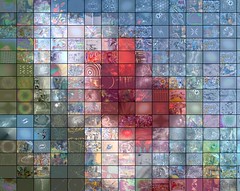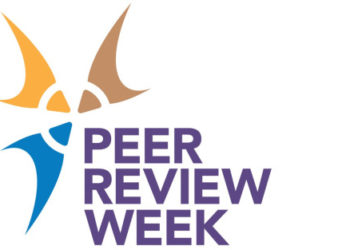
- Fractal Mosaic by qthomasbower via Flickr
The controversial math journal, Chaos, Solitons & Fractals, is back in business with two new Editors-in-Chief, a revised scope, and a more explicit set of policies about how it conducts review, specifically when manuscripts are submitted by its own editors.
According to a news release posted on March 16th, the publisher, Elsevier, has appointed two new “Co-Editors in-Chief” — Maurice Courbage (France) and Paolo Grigolini (USA), along with a new slate of editorial board members. The editorial board page still lists M.S. El Naschie as its founding editor.
In 2008, this journal became the center of a controversy over lax peer-review standards when five articles appeared in the same issue authored by the Editor-in-Chief himself, M.S. El Naschie. Whether or not El Naschie used the journal to promote himself and his own work, there was a widespread impression of editorial misconduct. Shortly thereafter, El Naschie’s retirement was announced.
The journal then put a stop to submissions , resumed publication, and spent several months publishing a long backlog of accepted manuscripts, including a string of articles by the retired Editor-in-Chief. It had all the appearances that the journal was in the process of closing shop.
Nearly two years later, the journal is reopening.
The new journal description page includes detailed information about the editorial decision-making process, detailing the appropriate steps when manuscripts are submitted by members of the journal’s own editorial board:
In keeping with Elsevier’s guidelines on potential editorial conflicts of interest, manuscripts (co-)authored by one of the co-Editor-in-Chief will be handled fully by the other co-Editor-in-Chief in an undisclosed review process. Similar disclosure arrangements are made in the case of Associate Editors (co-)authoring a manuscript.
The publisher also now states that as of January 2008, all Elsevier journals are members of — and thus abide by — the ethical standards established by the Committee on Publication Ethics (COPE).
Last year, Elsevier admitted to publishing six fake medical journals between 2000 and 2005 with sponsorship from a major pharmaceutical company and including republished articles that supported the company’s products. An initial refusal to investigate the issue lead many to question how serious the publisher was in adhering to their own ethical standards.
Discussion
2 Thoughts on "Controversial Math Journal Relauches: New Editors, Focus on Rigorous Review"
![Reblog this post [with Zemanta]](http://img.zemanta.com/reblog_e.png?x-id=e962b25c-29f1-45d1-880d-2037a64e7867)


